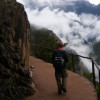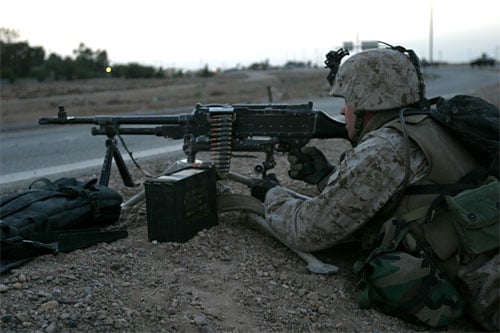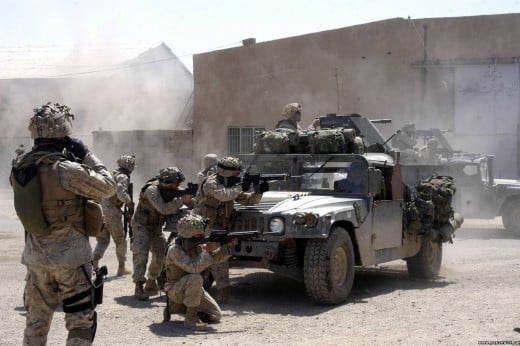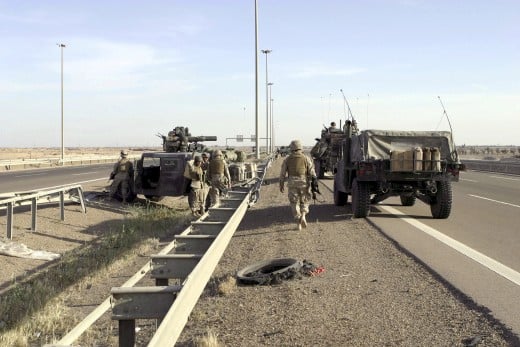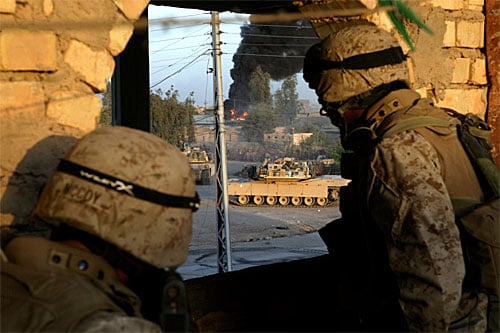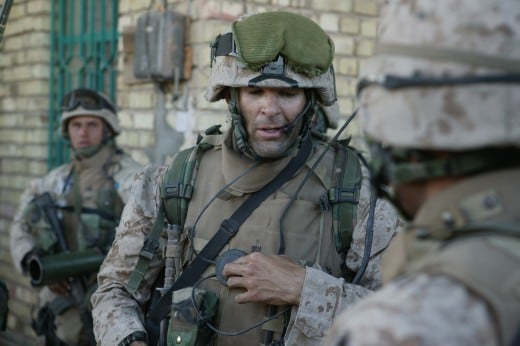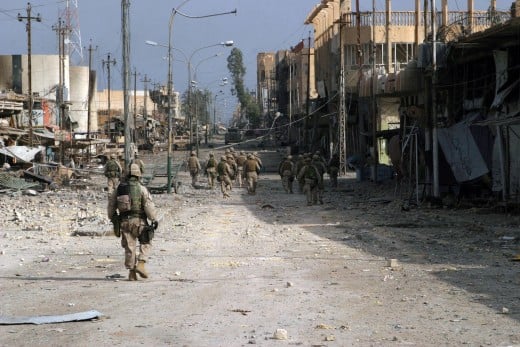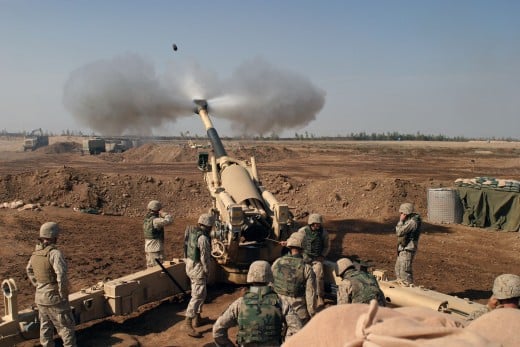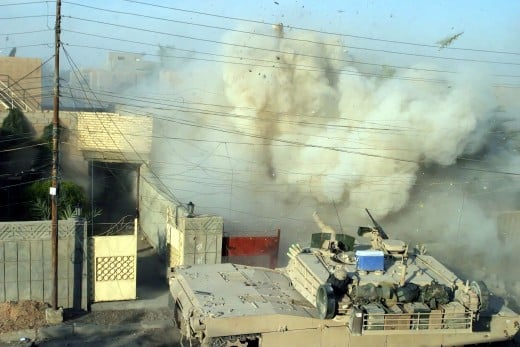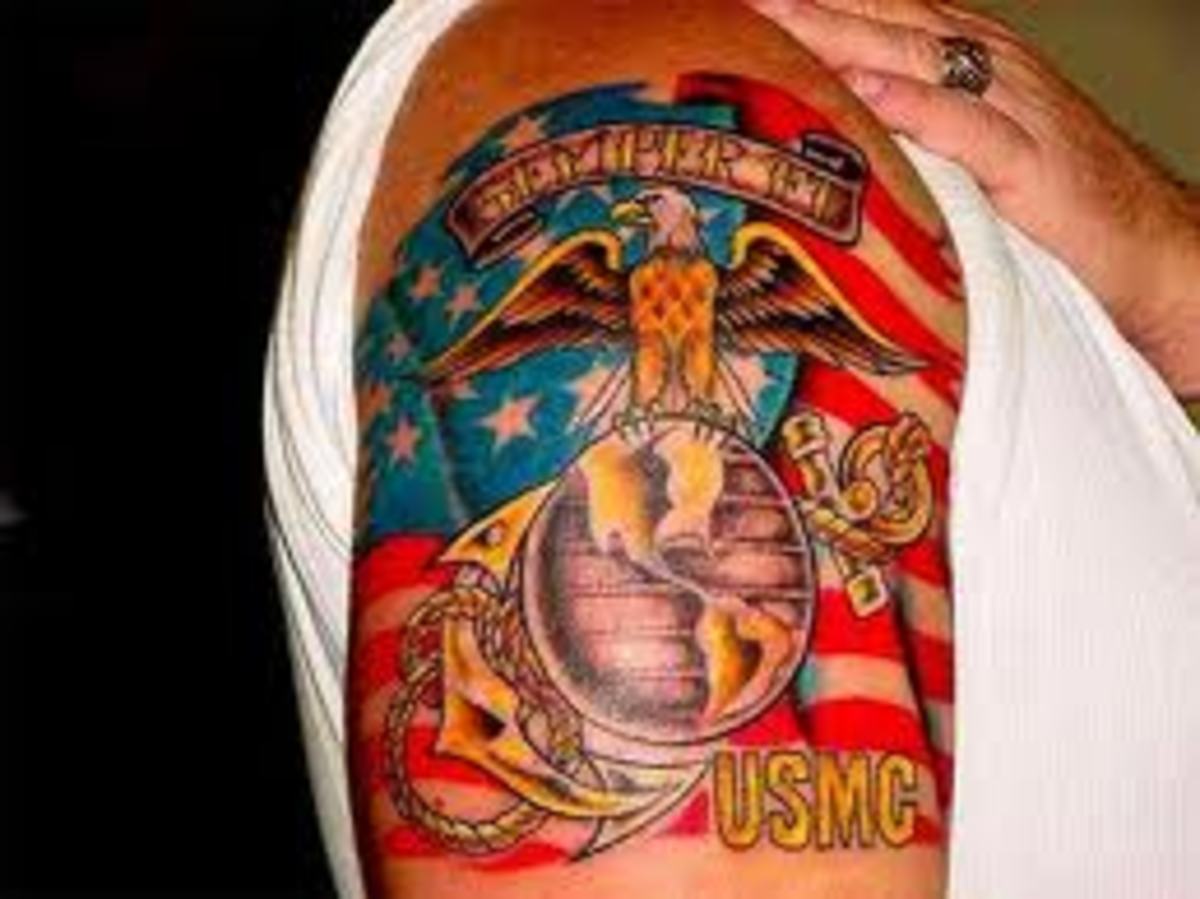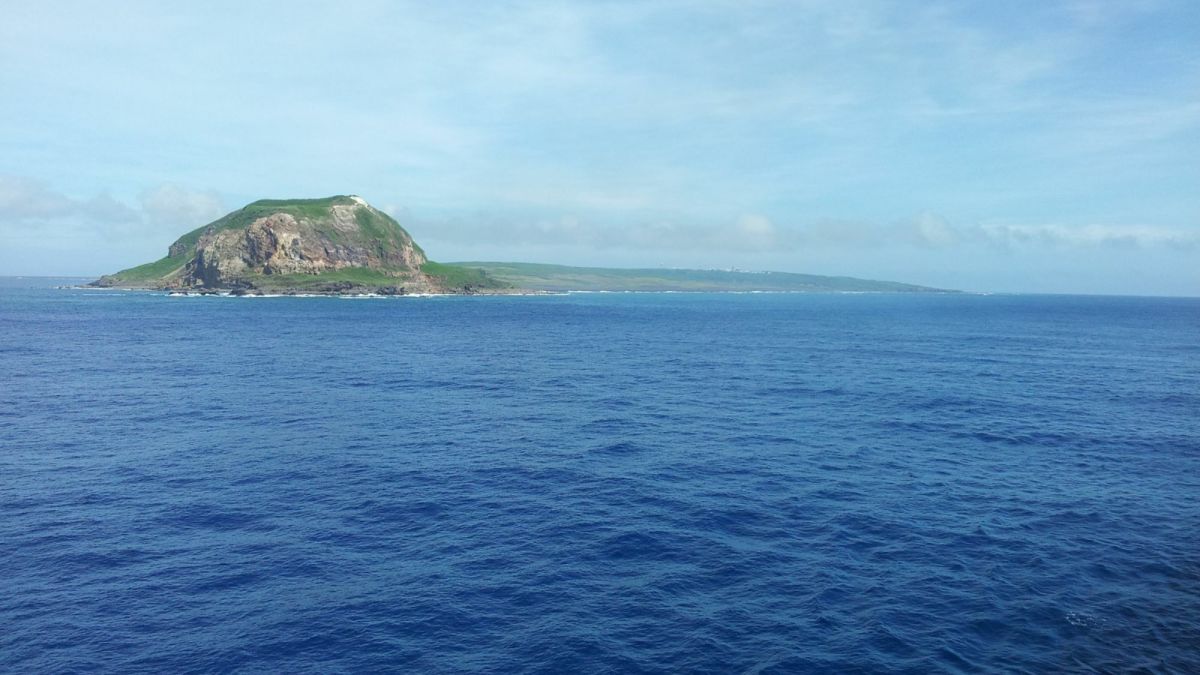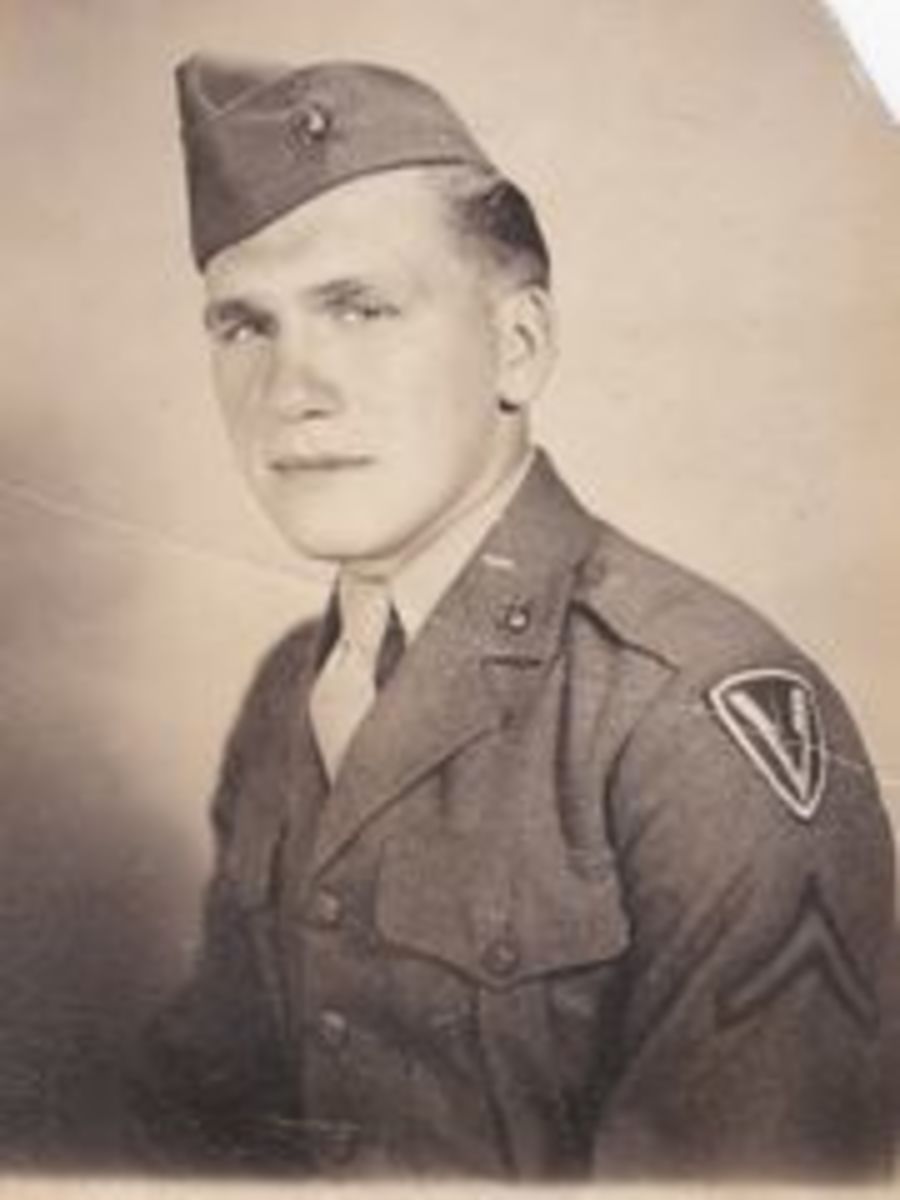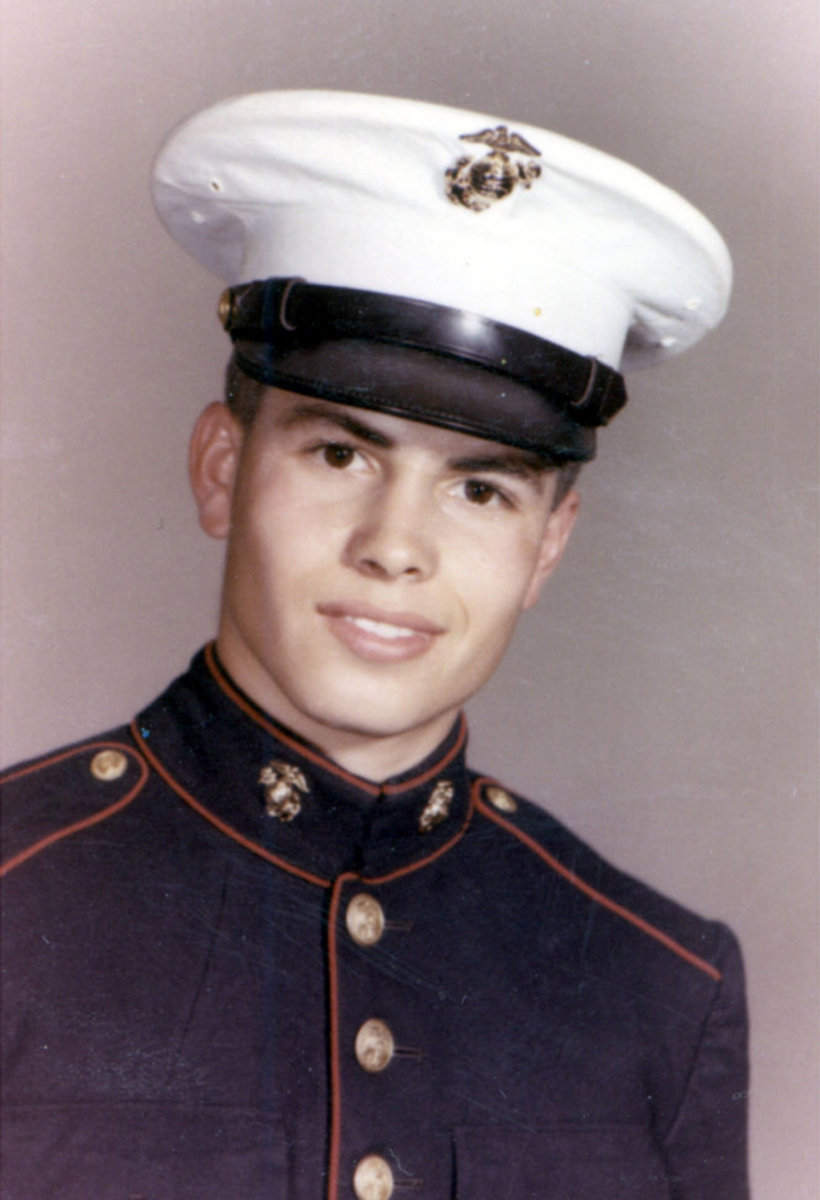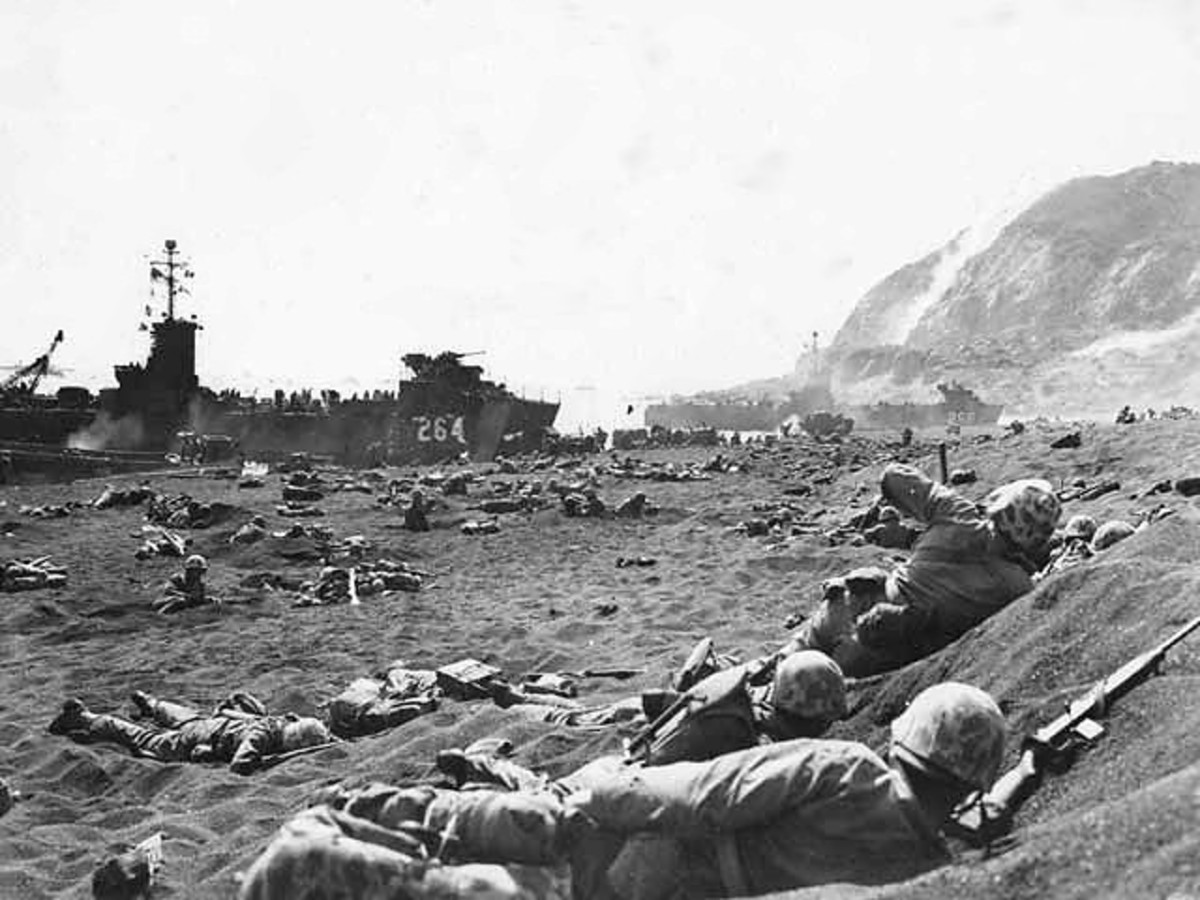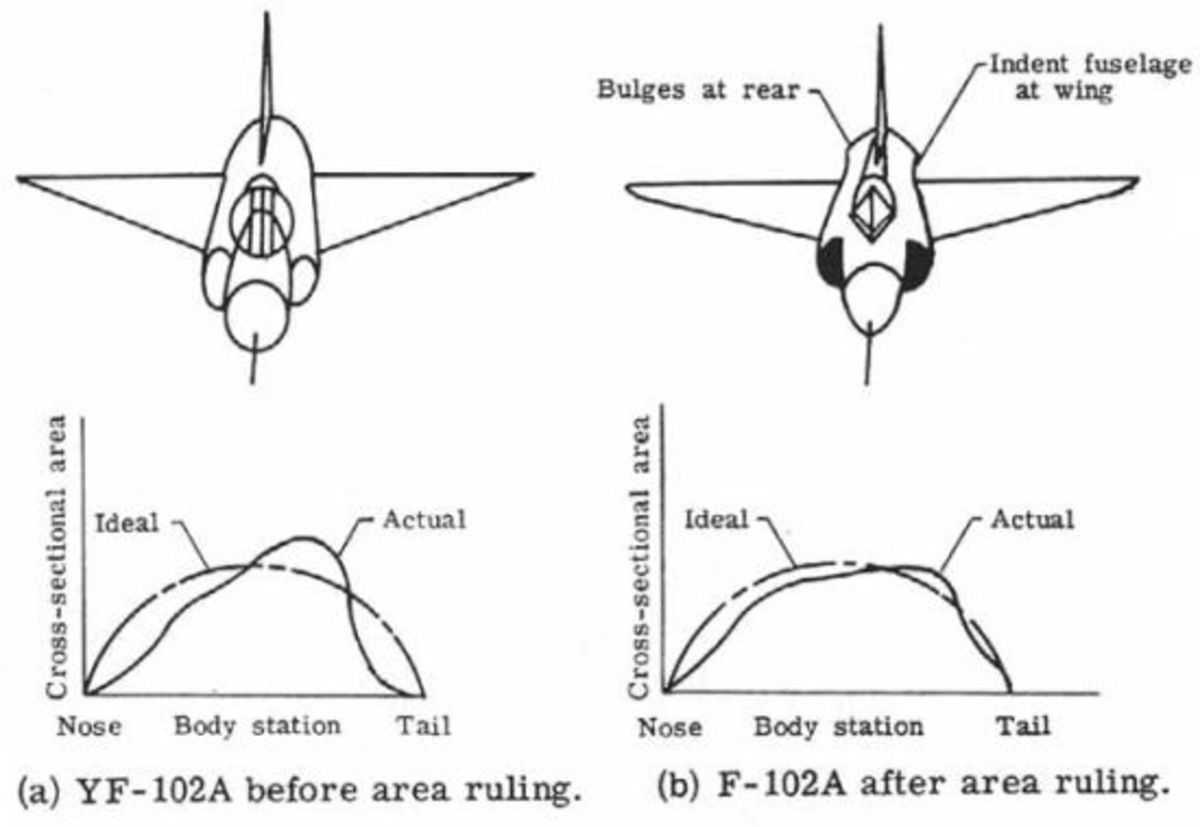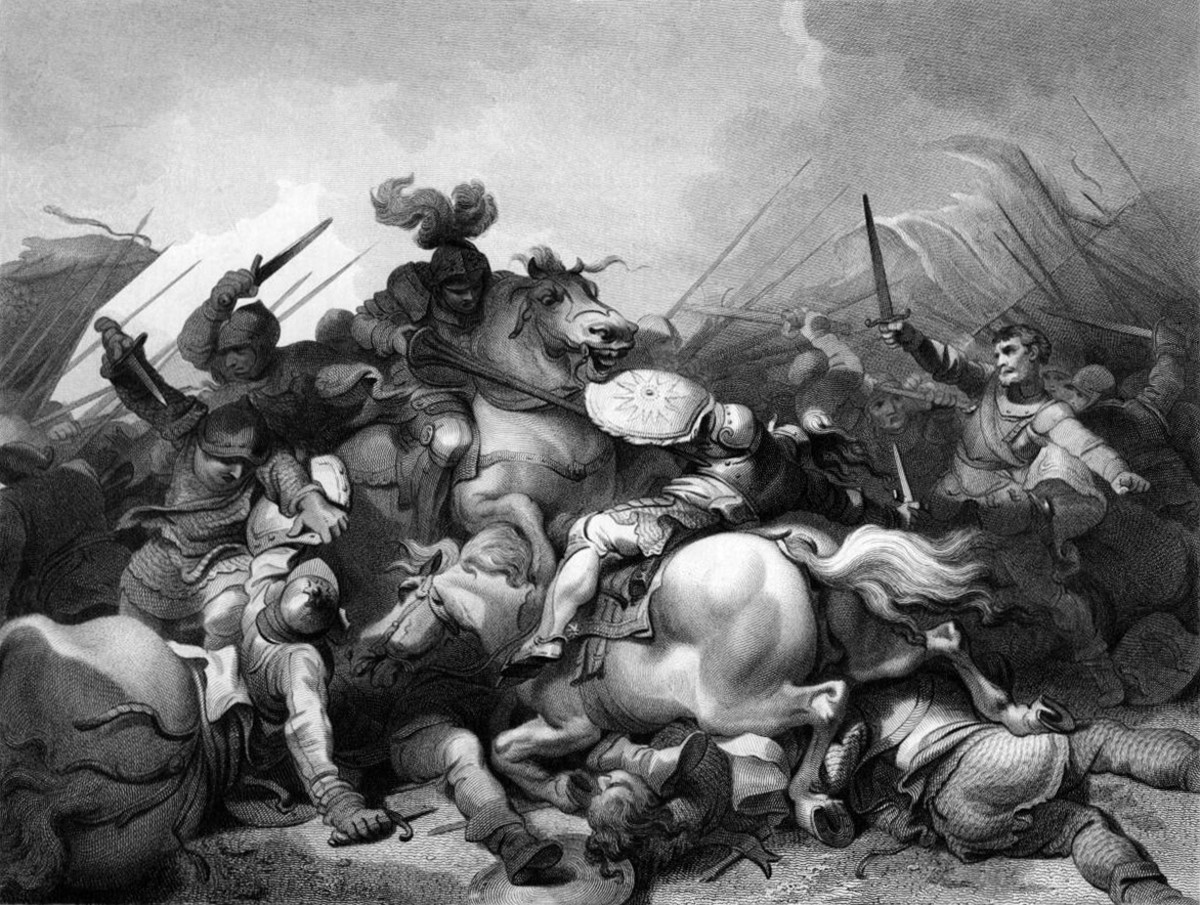10 November 1775: The United States Marine Corps is Born
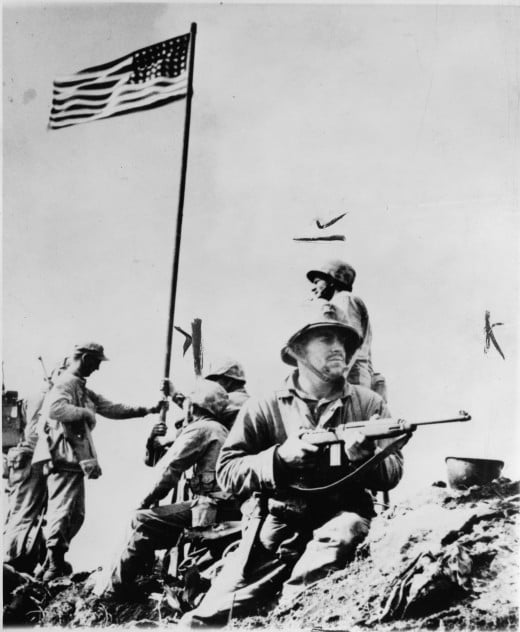
The establishment of the United States Marine Corps began a proud legacy of warriors. That legacy lives today and will continue to live as long as the United States of America needs them.
It would be impossible to cover the entire history of the Marine Corps in one article, but, some of the more "significant" events such as the establishment of the Marine Corps, the Battle of Chapultepec, Belleau Wood, Iwo Jima, the adoption of the Marine Corps Emblem, and Fallujah (to name a few) will be covered.
This information is based off of my personal learning experiences of Marine Corps history and the knowledge packets provided for recruits and officer candidates by the United States Marine Corps.
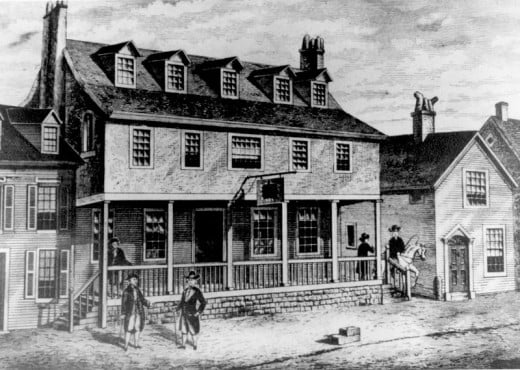
Establishing the Marine Corps
It all started when the 2nd Continental Congress passed that two battalions of Marines be raised on 10 November 1775. With these newly established Marine battalions, Samuel Nicholas was commissioned a Captain. Never officially called "commandant", he is considered to be the first traditional Commandant of the Marine Corps.
With Nicholas newly established position, he was charged with the task of recruiting two battalions of Marines. It wasn't easy for him to find able and willing bodies with a maritime background in the Philadelphia area. However, he would receive a lot of help and many of the needed Marines from one establishment, Tun Tavern.
Tun Tavern was run by a personal friend of Nicholas, Robert Mullen. Mullen was able to bring in 100 Rhode Island maritime men and for his work, he was commissioned a Captain in the Marine Corps and is known as the first recruiter in the history of the Corps.
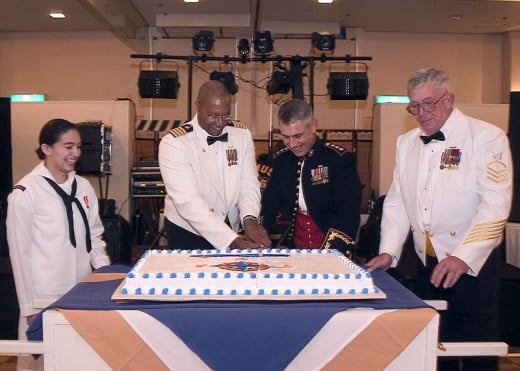
Marine Corps Ball
The Marine Corps Ball is a celebration of the birth of the United States Marine Corps. It is held annually on 10 November. Each and every ball is a little bit different as the individual in charge has the choice of what activities are necessary and of which he/she can financially afford.
One tradition that is often carried out at most Marine Corps Balls is the placement of empty chair at a table. The chair signifies those Marines that are unable to attend the Ball. However, some traditions are always in place.
A major part of this ceremony is the cutting of the cake. This tradition is carried out at every single Ball. It honors the youngest and oldest Marine present. The first piece of cake cut goes to the oldest Marine. The second piece of cake goes to the youngest Marine.
(The video below was uploaded to youtube by marinedevdog.)
2012 Marine Corps Birthday Message: "For Honor, For Country"
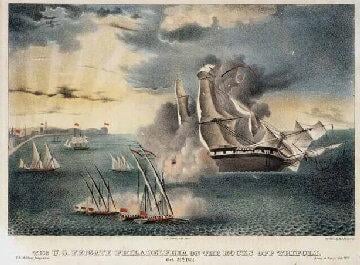
The Barbary Pirates War
This conflict has its roots with paying for safe passage through the Mediterranean Sea. Many European countries did this and viewed it as the "cost of business". The United States of America was unable to pay this fee as they were still trying to identify themselves as a country and recovering from the costs of the American Revolution. So, in 1801, the ruler of Tripoli declared war on the United States of America.
The newly re-created Navy, Marine Corps, and the Frigate Philadelphia, set sail for Tripoli Harbor to set up a blockade. After the Philadelphia ran aground, was captured by the Bashaw of Tripoli, and then destroyed by sailors and Marines, the fight went ashore.
In 1805, President Jefferson approved of an attack overland from Egypt. The former envoy of Tunis, William Eaton, led the attack and was accompanied by a Marine Guard of seven men, European and Arabic mercenaries, and Prince Hamet and some of his men. These roughly 400 men crossed 600 miles of Libyan Desert to attack the city.
The victory at Derna, Tripoli, was the first time the American flag had been raised in the Old World. In honor of his actions, Prince Hamet presented Lt Presley O'Bannon, the man in charge of the Marine Guard, with the Mameluke Sword. Replicas of the sword are still worn to this day by Marine Corps Officers and it is the oldest weapon still in use today by any of the U.S. Armed Forces.
Archibald Henderson
Due to his length of service as Commandant, he is referred to today as "The Grand Old Man of the Corps."
The Battle of Chapultepec (12 - 13 September 1847)
The Mexican-U.S. War started over territorial disputes in the southwest of the U.S. (present day California, Arizona, New Mexico, and Texas) in 1846. President Polk desperately needed forces for an invasion of Mexico from the east. The fifth Commandant of the Marine Corps, Archibald Henderson, offered the assistance of the Marines.
On 9 March 1847, the first large-scale amphibious landing took place with a combined 12,000 Army, Navy, and Marine Corps personnel. They then marched on to the capital of Mexico, Mexico City. On the outskirts of the city was the fortress of Chapultepec. This heavily fortified Mexican military academy was the final obstacle for the combined forces before reaching the city itself.
During one of the bloodiest battles of the war, the Marines were tasked with assaulting the fortress from its most difficult approach. Their main purpose was as a diversion for militia troops. Thirteen of the twenty-three Marine Officers participating in this battle were decorated for bravery. A popular story, unsupported by fact, goes that 90% of the Officers and Noncommissioned Officers (NCOs) were killed during the fierce battle.
The loss of life and bravery of the Officers and NCOs is honored today through the "blood stripe" worn on the dress blue trousers of the noncommissioned and commissioned Officers.
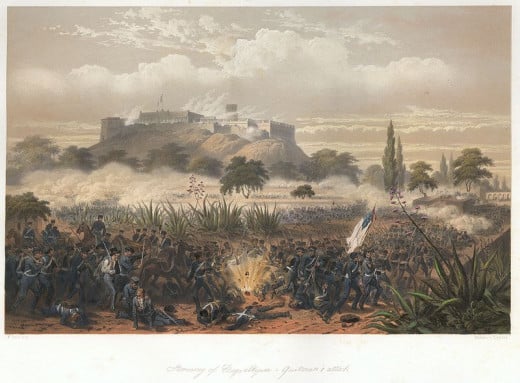
The Marines' Hymn
From the Halls of Montezuma,
To the Shores of Tripoli;
We fight our country's battles
In the air, on land, and sea;
First to fight for right and freedom
And to keep our honor clean;
We are proud to claim the title
Of UNITED STATES MARINES.
Our flag's unfurled to every breeze,
From dawn to setting sun;
We have fought in every clime and place
Where we could take a gun;
In the snow of far off northern lands
And in sunny tropic scenes;
You will find us always on the job --
The UNITED STATES MARINES.
Here's health to you and to our Corps
Which we are proud to serve;
In many a strife we've fought for life
And never lost our nerve;
If the Army and the Navy
Ever look on Heaven's scenes;
They will find the streets are guarded
By UNITED STATES MARINES.
Marine Corps Emblem, Motto, and Hymn
Eagle, Globe, and Anchor (EGA)
Commandant Jacob Zeilin wanted to adopt an official Marine Corps symbol that depicted his Marines as both American and maritime warriors. The original design (1868) consisted of three distinct parts: eagle (representing the nation), globe (representing worldwide service), and anchor (representing sea traditions and emphasizing the close ties between the Marine Corps and Navy).
"Semper Fidelis"
Prior to 1883, there had been three Marine Corps Mottoes. Today's motto, "Semper Fidelis", is etched in the scroll clenched in the beak of the eagle of the EGA. The Latin words mean "Always Faithful". This motto was adopted by the eighteenth Commandant of the Marine Corps as there has never been or attempted mutiny in the Corps history.
The Marines' Hymn
Some mystery surrounds The Marines' Hymn. No one knows exactly when the words were written, but it is believed that Marines fighting in the Mexican War wrote the words. Following the Civil War, the Marine Band began to play The Marines' Hymn at traditional White House concerts. It is the oldest official song of the U.S. Armed Services.
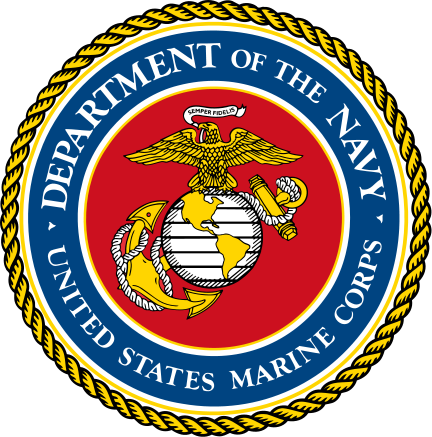
"Devil Dogs"
During the battle, a Marine took the diary of a dead German soldier. Some of the last words written by the German soldier were of how they found a suitable nickname for the Marines, "Teufelhunden". In English, the word means "Devil dogs". German high command classified the Marines as "Shock Troops", which was a classification reserved only for the finest military organizations.
Belleau Wood (6 - 26 June 1918)
During World War I, Marines were put in place to plug the broken French lines. The Marines were given the orders to, "Hold the line at all hazards." The German offensive was dissipated as both sides began to setup defensive positions. The German's were dug in at Bois de Belleau (Belleau Wood). As the Marines moved forward, the retreating French encouraged them to fall back. Marine Capt Lloyd Williams reportedly answered, "Retreat hell, we just got here!"
Marines eventually secured the woods, but not until twenty days after some of the most fierce fighting in Marine Corps history, much of which was hand-to-hand. Gunnery Sergeant Dan Daly motivated his Marines to get across the wheat fields with the famous words, "Come on you sons of bitches! Do you want to live forever?"
The French were extremely impressed with the Marines and their tenacious spirit. French Parliament declared the Fourth of July to be a national holiday in honor of the U.S. forces fighting in France. For their service and sacrifice, the Marines were given a citation for gallantry at Belleau Wood (the Croix de Guerre) and the area was renamed "Bois de la Brigade de Marine."
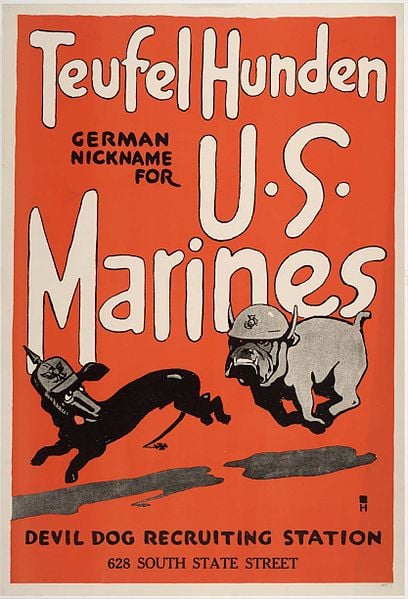
Famous Quotes About Iwo Jima
Admiral Nimitz- "Among the Americans who served on Iwo Island, 'uncommon valor was a common virtue.'"
James Forrestal, Secretary of the Navy- "The raising of that flag means a Marine Corps for the next five hundred years."
Unknown-"To a greater degree than was necessary, taking Iwo Jima was like throwing human flush against reinforced concrete."
Iwo Jima (19 February - March 1945)
Iwo Jima was not only one of the defining battles of the Marine Corps, but of World War II. Under the command of Lieutenant General Tadamichi Kuribayashi, the Japanese forces were dug in underground and in the mountains of the island.
Three Marine Divisions (3rd, 4th, and 5th) were tasked with taking this volcanic island. On 19 February, 4th and 5th Divisions landed on Iwo Jima and took part in the largest and most deadly Marine amphibious landing to date. The Marines first objective was to isolate and take Mount Suribachi.
After less than a week of fighting, Mount Suribachi was secured and the famous flag raising picture was taken. However, the picture taken by an Associated Press photographer was the second and staged flag raising. The picture is arguably one of the most iconic photographs of Marine Corps history.
Even after Suribachi was captured, much more fighting took place on Iwo Jima. Even though fighting did last until 26 March, the island was declared secure on 16 March. However, fighting continued in the northwest corner of the island in a gorge which held General Kuribayashi's command post. Pockets of intense fighting continued until 26 March when the last of the enemy resistance was destroyed.
General Kuribayashi intended to make the Marines pay for every inch of sacred Japanese soil. He did so by ensuring at least one Marine death for every Japanese death. According to accounts and reports, for every yard on the island there was a dead Marine or Japanese soldier.
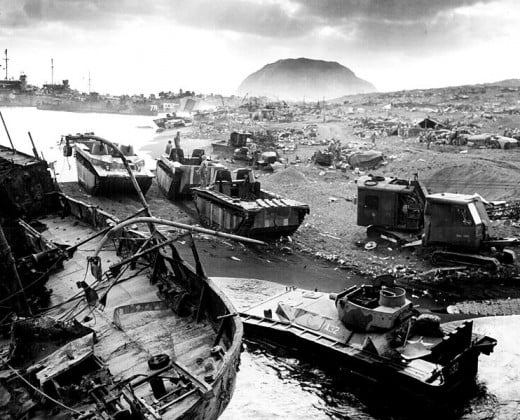
Chosin Reservoir (27 November - December 1950)
This man made reservoir laid at the end of a 73 mile long supply route that winded through the North Korean mountains from Hamhung. This was a major supply route for the U.S. military to get artillery, food, ammunition, and other items needed for the Marines to be successful, inland. When the weather dropped from a cold 32ºF to a bitter -8ºF, the Marines fight for life got even more complicated. On Thanksgiving, the Marines huddled in for a cold holiday meal as the fight would get harder in the coming days.
On 28 November, in -20ºF weather, Marine units all along the main supply route were attacked by large contingent of Chinese forces. The Army units assisting in the security of the route were destroyed with little to no survivors. Much of the fighting in the blowing snow was done in close hand-to-hand combat, using frozen weapons as clubs.
Outnumbered by the 300,000 Chinese soldiers, an order was given to the 1st Marine Division to withdraw to the sea. When asked by a reporter if he was retreating, General Smith (commander of the 1st Marine Division) said, "We are not retreating, we are attacking in a different direction."
The Marines started to make their way to the sea as they not only fought the Chinese, but the bitter cold as well. After all was said and done, the 1st Marine Division had destroyed an estimated seven Chinese divisions. At Hungnam, the U.N. fleet evacuated the Marines with nearly all their equipment and much of the U.S. Army equipment. At a cost of 6,000 Marines and 37,000 Chinese troops, historians consider the Chosin Reservoir Campaign the most successful withdrawal in military history.
Colonel Lewis P. "Chesty" Puller
Col Puller was commander of 1st Marines (part of 1st Marine Division). For his actions during the Chosin Reservoir Campaign, he was awarded his fifth Navy Cross. The Navy Cross is the second highest military decoration for valor awarded to an individual for their extraordinary heroism in combat. He is the only Marine ever-awarded five and is considered the most decorated Marine in Marine Corps history.
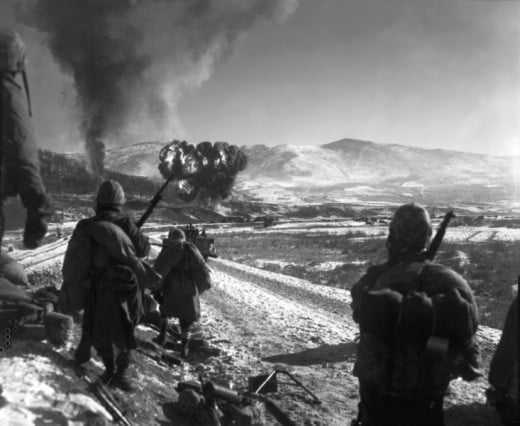
The Tet Offensive (January - February 1968)
The North Vietnamese armies (NVA) and Ho Chi Minh were looking for a way to turn the tides of the Vietnam War. Their armies had been worn down through intense fighting along the Demilitarized Zone (DMZ) and the Viet Cong (VC) had been making little to no gains along the front lines. A large-scale operation intended to jump start the South Vietnamese in overthrowing their government and capture the cities of Saigon, Hue, Khe Sanh, and Da Nang, was planned to coincide with the Vietnamese Lunar New Year celebration.
The Siege of Khe Sanh (21 January - 6 April 1968)
Khe Sanh was a strategically important for both the U.S. and its allies and the North Vietnamese and their allies. Not only would the North Vietnamese forces been able to outflank other Marine units in the area with the fall of the Khe Sanh Combat Base, but both sides saw it as a potential Dien Bien Phu and a symbol of U.S. determination to see the war through.
Enemy artillery pounded the instillation for 77 days and at the height of the seige, over 1,200 rounds struck inside the Marine perimeter per day. While the enemy lost two divisions of soldiers, the Marines suffered 205 casualties and 1,668 wounded. The overall seige was a failure as not a single village in the province revolted against the government.
Hue City (31 January - 24 February 1968)
Even though the city was on the main supply route from Da Nang to the DMZ, both sides had spared the city of heavy fighting, until the Tet offensive. NVA troops easily seized the city and began to slaughter the civilian population. A Marine company stationed near by made their way towards the city. The Marines were ambushed as they crossed the bridge into the city. Thus began the house-to-house fighting Marines had not done since the Korean War. Marines were at first denied air support and artillery as senior military officials did not want to destroy the ancient city. Eventually air support was approved.
The Tet offensive was successful on at least one front, politically. While the enemy suffered the loss of 15,000 troops and an additional 65,000 wounded, back in the U.S., citizens began to grow weary of the conflict. Militarily, the enemy was spent, but won a huge political victory.
Dien Bien Phu
The Battle of Dien Bien Phu was a decisive win for the Democratic Republic of Vietnam (North Vietnam) under Ho Chi Minh, that ultimately gave them victory over France during the First Indochina War.
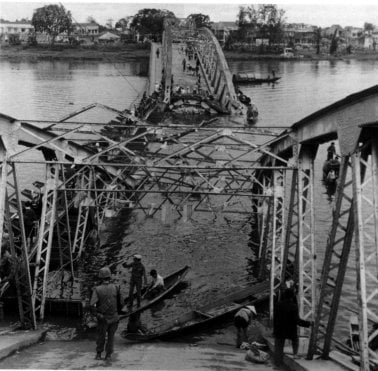





Fallujah (4 April - 23 December 2004)
From the start of the Iraq War, Fallujah was a focal point of the U.S. led coalition. With the population largely being Sunni and supporters of Saddam Hussein, commanders believed the city could be a point of friction. However, after the initial invasion, the city was as calm and peaceful as it could be in the war torn country. Fallujah gradually became more and more unstable as time wore on.
The first and second battles of Fallujah, Iraq, proved to be some of the hardest fought, bloodiest battles of the Iraq War. The first Battle of Fallujah (Operation Vigilant Resolve) occurred after the death of four Blackwater USA contractors. The second Battle of Fallujah (Operation Phantom Fury) was an attempt to clear the city of an al-Qaeda linked leader, Abu Musab al-Zarqawi, and his men.
Operation Vigilant Resolve (4 April 2004 - 1 May 2004)
After the deaths of four contractors and their bodies had been burned, dragged through the street, and hung up on a bridge spanning the Euphrates river, Brigadier General Kimmitt vowed a stern retaliation from U.S. forces. On 4 April, the 1st Marine Expeditionary Force launched their assault.
Surrounding the city, the Marines had the intent of taking it over. They used local radio stations and handed out pamphlets urging citizens to stay inside and help assist in the capture of insurgents and those responsible for the four Blackwater deaths. Artillery, air strikes, and AC-130 gunships rained down on the city. Political problems began to arise from the fierce fighting.
The reported numbers of civilian casualties caused the Iraqi government to step in and demand a ceasefire. On 9 April, the U.S. forces agreed to the ceasefire, which also allowed humanitarian aid into the city. Until the Marines withdrew from the city on 1 May, sporadic fighting popped up around Fallujah. The Marines turned command over to the the newly-formed Fallujah Brigade.
Operation Phantom Fury (8 November 2004 - 23 December 2004)
Six months later the Marines were back in Fallujah taking the fight to the insurgents. Their return was brought about from the fall of the Fallujah Brigade. The insurgents used intimidation to gain control of the Brigades weapons. With control of the U.S. made weapons, a large presence of fighters in the city, and the previous "victory", Abu Musab al-Zarqawi felt unstoppable. That all changed on the morning of 8 November.
Six battalions of Army, Marine, and Iraqi personnel descended on Fallujah in the early morning hours of 8 November. The Marines and their allies fought viciously through the city to achieve their objectives. The insurgents had been preparing the city for an attack. They had dug tunnels, trenches, spider-holes, planted IED's, and booby-trapped vehicles and buildings. A coalition victory would not come easy and without a great loss of life.
Some of the most intense fighting took place in the Julan District. In that portion of the city alone, 26 Marines were killed and 353 were wounded.
By 13 November, most of the fighting had subsided. However, some intense pockets of insurgent resistance still did exist. By 23 December, the battle had been won and al-Zarqawi and his men were no longer in control of the city.




(The video below was uploaded to youtube by TheWarriorProject.)
The Warrior Song - Hard Corps
© hockey8mn, 2012. All Rights Reserved.
